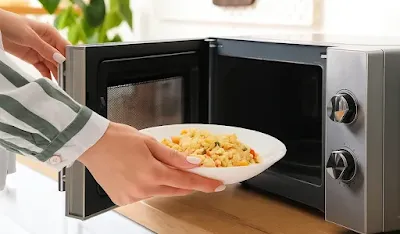Why Is There Water Collecting Inside My Microwave?
Why Is There Water Collecting Inside My Microwave?
Microwaves are essential in the kitchen because they are fast and easy to use, but sometimes you may notice a frustrating problem: water gathering inside the microwave, particularly after cooking. This might seem harmless at first, but repeated moisture buildup can cause mold, bad smells, or even damage to the appliance. If you need dependable Microwave Oven Services in Kozhikode, this guide will help you identify the reasons for this issue and how to deal with it effectively.
Is Moisture in the Microwave Normal?
Yes, a bit of moisture is normal, especially after heating foods that have a lot of water, such as soups or vegetables. When food gets hot, it produces steam, which can gather on the cooler walls of the microwave. However, too much water collecting that stays long after use or pools at the bottom is a concern.
What Causes Water to Collect in Your Microwave?
1. Steam Condensation from Food
When you cook foods with a high water content, like rice, pasta, or curries, the moisture becomes steam while heating. This steam has to go somewhere. Typically, it condenses on the inside walls of the microwave, particularly if the door is kept closed after cooking.
Tip:
Keep the microwave door open for a few minutes after use to let air flow and avoid moisture buildup.
2. Blocked or Inefficient Ventilation
Microwaves have vents designed to let heat and steam escape. If these vents get blocked by grease or dirt—or if your microwave is positioned in a spot with poor airflow—it can keep moisture trapped inside.
Solution:
- Clean the vents often.
- Don’t place any items directly on or in front of the microwave vents.
- Make sure there is enough space around the microwave for proper air movement.
3. Microwave Door Left Closed
Keeping the door fully shut right after cooking traps warm, moist air inside. As this air cools, it turns into water droplets on the walls.
Prevention:
After heating food, leave the door a little open to let moisture escape naturally.
4. Worn-Out Door Seals
If the door seals or gaskets are damaged, loose, or dirty, the microwave may not ventilate properly. Bad seals can trap steam or let outside air mix with hot air inside, increasing condensation.
Fix:
Check the rubber gasket around the door. If it looks worn, torn, or dirty, it might need to be cleaned or replaced. You can contact trusted Microwave Oven Services in Kozhikode for a professional check.
5. Low Ambient Room Temperature
Sometimes, the temperature in your kitchen can cause condensation. If the kitchen is cold and you're heating something very hot, the temperature difference can speed up moisture collection in the microwave.
Tip:
Wipe down the microwave after each use and let it air out to reduce long-term moisture problems.
Why It Matters
- Health risks: Ongoing moisture can lead to mold and bacteria inside your microwave.
- Odors: Dampness can create bad smells over time.
- Damage: Over time, water can harm internal electronics, causing performance issues or even short-circuiting.
Conclusion
Water buildup in your microwave may seem small, but over time, it can indicate bad airflow, worn-out parts, or incorrect usage habits. Instead of ignoring it or constantly cleaning it, why not have it looked at by professionals?
That’s where Fixail comes in. Our team knows how every main microwave brand and model works. We offer microwave oven services in Kozhikode that focus on fixing the main issues, not just the obvious ones. Whether it’s a bad door seal, blocked vents, or moisture damage inside, we’ll make sure your microwave operates well and stays dry after every use.
Fixail is quick, local, and trustworthy—because your kitchen deserves the best. Schedule your service today and eliminate moisture issues in your microwave for good.




Comments
Post a Comment